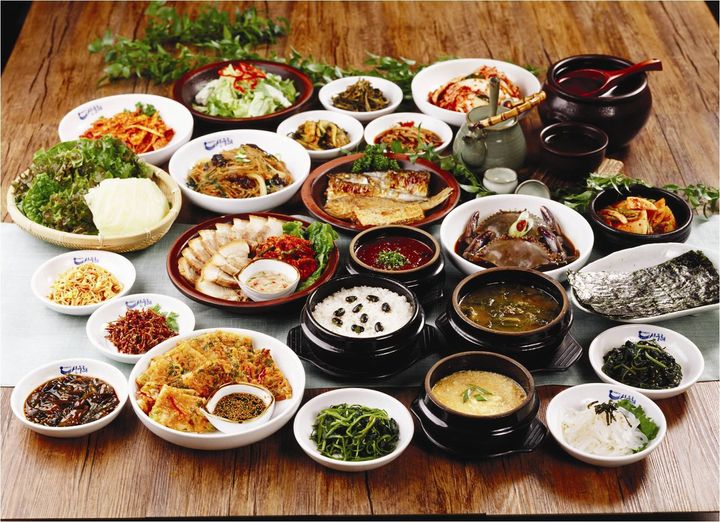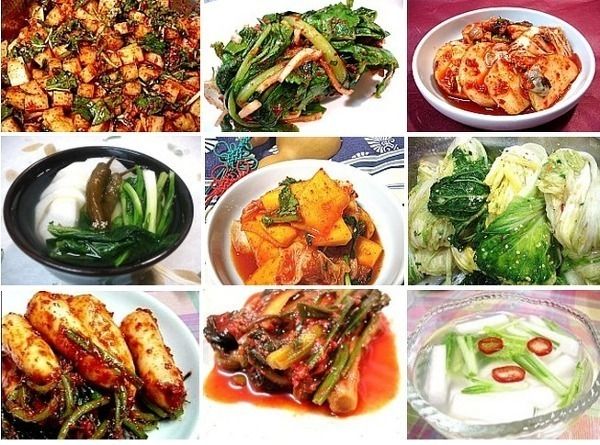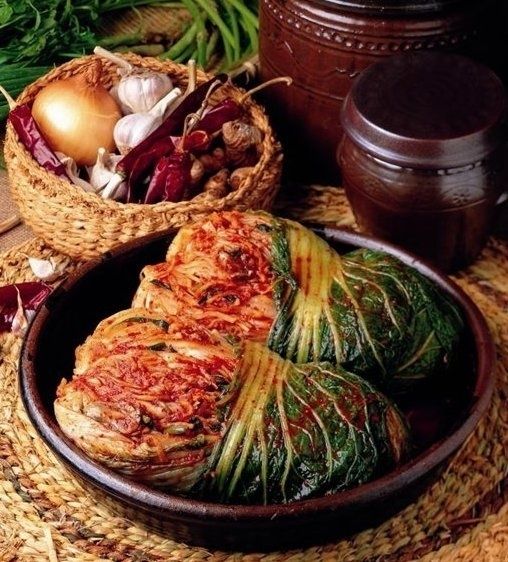These days, a lot of people associate Korean food with Korean BBQ but the fact is, Koreans actually consume more seafood and vegetables than meat!
Hansik, which means Korean food, originates from the Korean Peninsula with a history and culture that spans over 5,000 years.
A traditional Korean meal is served with a bowl of rice, soup and Kimchi, along with a variety of Ban-Chan or side dishes that are high in fiber and protein, low in calories and fat.

Korean Bap Sang (Food Table)
Today, there are literally thousands of recipes that originate from 8 regions of Korea, where the foods are made with specific ingredients, spices and distinctive cooking styles. Even the local geography and climates serve to differentiate the foods.
The philosophical balance of Korean food consists of five ingredient colors - white, black, red, green and yellow, and and represents harmony for the body. The five Earth elements of wood, fire, soil, metal and water are also represented though the colors. Color is also used to represent balanced functions of the various organs in the body, as well as the five essential flavors - sour, bitter, sweet, spicy and salty.
Sharing is a specific ethic taught in Korean culture that is derived from Confucianism, even though over 30% of Koreans are now Christians. This is why Koreans are communal eaters as we like to eat our meals with family, friends and relatives, rather than on our own. Unlike most Asian foods where the vegetables are sautéed or stir-fried together, Koreans prepare them separately, to preserve the color, texture flavor, temperature and nutritional benefits.
Kimchi is the most popular staple food in Korean cuisine served with every meal, both at home and in all the Korean restaurants!

Different types of Kimchi

Baechu Kimchi (Napa Cabbage Kimchi)
Basically, Kimchi is fermented vegetable abundant in probiotics or lactic enzymes, vitamins and fiber, low in fat and calories. It known for its anti-aging and cancer preventing agents and was selected as one of the world’s five healthiest foods by “Health” magazine.
Today, there are over 200 different kinds of Kimchi in Korea, and the flavor and level of spiciness vary based on each region. An average Korean consumes about 40 pounds of Kimchi a year and it is no exaggeration to say that for most Koreans, it is impossible to enjoy a meal without Kimchi. In fact, we Koreans eat so much Kimchi that we say, "Kimchi" instead of "Cheese" when taking pictures!
Here is a quick and easy recipe for Napa cabbage Kimchi. You can get all the ingredients from a Korean or Asian grocery store, if there’s one near you. If not don’t worry! You can always substitute a couple of ingredients with something similar.
(Yield: 4-6 servings)
Ingredients:
- 1 large head Napa cabbage
- 8 cups water
- 1 1/4 cup coarse sea salt
- 3 green onions
- 1 brown onion sliced
- ½ daikon radish
Kimchi sauce:
- 1/2 onion thinly sliced
- 3 Tbsp. minced garlic
- 2 Tbsp. minced ginger
- 1/2 Korean pear grated (OR you can use regular pear or pineapples)
- 2/3 cup Gochugaru Korean chili flakes (Or regular chilli powder)
- 3 Tbsp. anchovy or fish sauce (If you can’t find fish sauce, don’t worry about it!)
- 2 Tbsp. Stevia or sugar
- 2 cups water
Directions
- Cut the Napa cabbage into 1-inch length; slice the onion, green onion and daikon radish into thin strips.
- Dissolve coarse sea salt into 8 cups of water in a large mixing bowl.
- Soak the cabbage for at least 2-3 hours in the salt-water solution, until it soften (Toss every 30 minutes to ensure even absorption)
- In another bowl, make the Kimchi sauce by combining all the ingredients.
- Rinse the cabbage, drain and squeeze excess moisture.
- In a large mixing bowl, mix sliced onion, daikon radish, green onion and salted cabbage with the Kimchi sauce.
- Taste and adjust seasoning by adding more anchovy sauce or sugar.
- Transfer the cabbage Kimchi into a traditional Onggi jar (If you have one) or a large Tupperware.
- Pour 1/2 cup of water to the mixing bowl, give it a swirl and pour the liquid over the Kimchi.
- Close the lid and leave the Kimchi out in room temperature for 36-48 hours.
Tip: When you see tiny bubbles forming on the surface, that’s when the fermentation process is starting to take place! You can use Tupperware to store Kimchi in the fridge and serve chilled. The scent of fermented kimchi will not be pleasant for most people, so you might want to consider getting a separate cooler for the Kimchi!
You can also watch my cooking video of making Kimchi, featured on PBS below!
